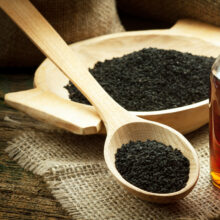Going Organic with Amazon
- Published: Tuesday, May 15th 2018
- in Nutrition

If you’re trying to eat healthier, you’ve probably discovered organic food is available at just about every grocery chain. Or, if you live in a big city, you may be shopping at an organic-chain like Whole Foods or Sprouts. In addition, if a farmer’s market is nearby, you’ve probably discovered the benefits–and savings–of purchasing fresh produce and foods from certified organic farmers. Even the online retail giant Amazon is working to make it easier and less expensive for everyone to eat organic. For example, the company is rolling out new features like rapid delivery and attractive discounts.
Amazon Gets Fresh
In 2017, Amazon acquired Whole Foods, the largest organic grocery chain in the U.S., for $13.7 billion dollars. We didn’t need to call Nancy Drew to know this was a clue: organic foods have become big business. Since the acquisition, Amazon has cut some prices at Whole Foods–with mixed results. It has also announced additional discounts and benefits for Amazon Prime members through its AmazonFresh program. For example, Amazon introduced two-hour delivery[1] from Whole Foods in select locations and free delivery on all orders over $50. In addition, the mega-retailer plans to introduce a 10 percent price cut on Whole Foods items.
Martha Taps Amazon
In 2017, lifestyle goddess Martha Stewart and partner Marley Spoon inked a deal with AmazonFresh to deliver home cooking kits. Martha & Marley Spoon meals include Martha’s award-winning recipes and her smart cooking techniques. The meals were initially delivered to customers in four metro areas, New York, San Francisco, Dallas and Philadelphia. They are also pre-portioned and take less than 40 minutes to cook. Rather than committing to a subscription plan, customers can choose how many meals they want delivered each week via Amazon–or skip delivery.[2]
Know What You’re Ordering
When it comes to food, the words organic, natural and farm-to-table have taken on an almost mystical aura that implies, “It must be the best.” However, not all organic foods are the same. The raspberry you’re about to enjoy could be locally grown. However, it might have been raised in a foreign country and shipped to the U.S. (Think larger carbon footprint.) In addition, the farmers who raise these foods may work under difficult conditions and not earn a living wage.
On the flip side, a farmer may farm organically but not take the time and effort to be USDA certified. The upshot? Do your homework and find out where and how the food was grown before making your purchase.[3]
However, there is good news: Research shows that organic foods typically have higher nutrient levels. For example, a study conducted by the University of California at Davis demonstrated that organic tomatoes, kiwifruit, corn and strawberries–grown side-by-side with non-organic versions–had more nutrients.
[1] Geek Wire, “Amazon will offer more Whole Foods discounts for Prime members, report says,” Taylor Soper, May 2018
[2] Fortune, “Martha Stewart’s Meal Kits Added To AmazonFresh,” John Kell, March 2017.
[3] Cooking Light, “How to Buy the Best Organic Foods,” Maureen Callahan, March 2009



